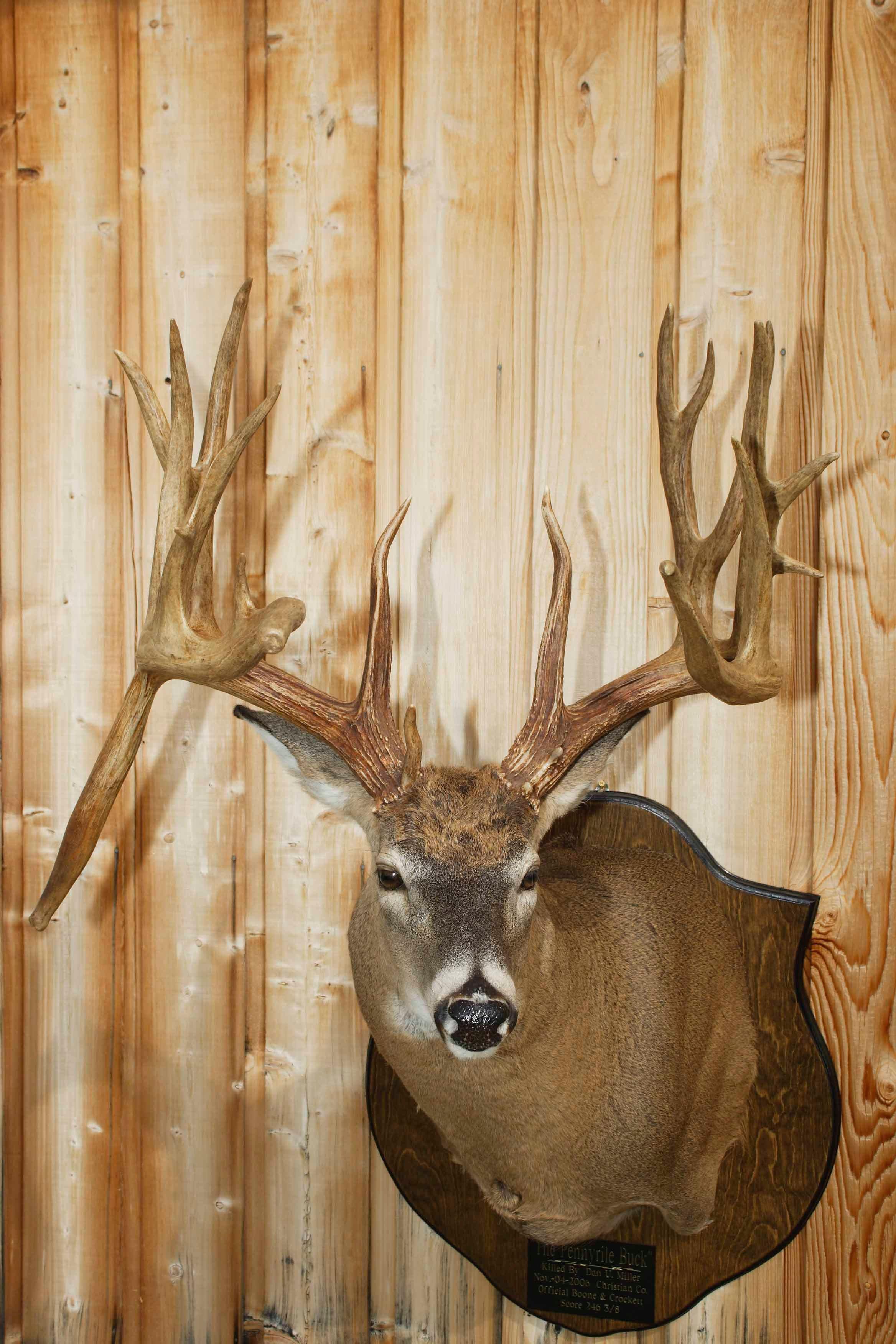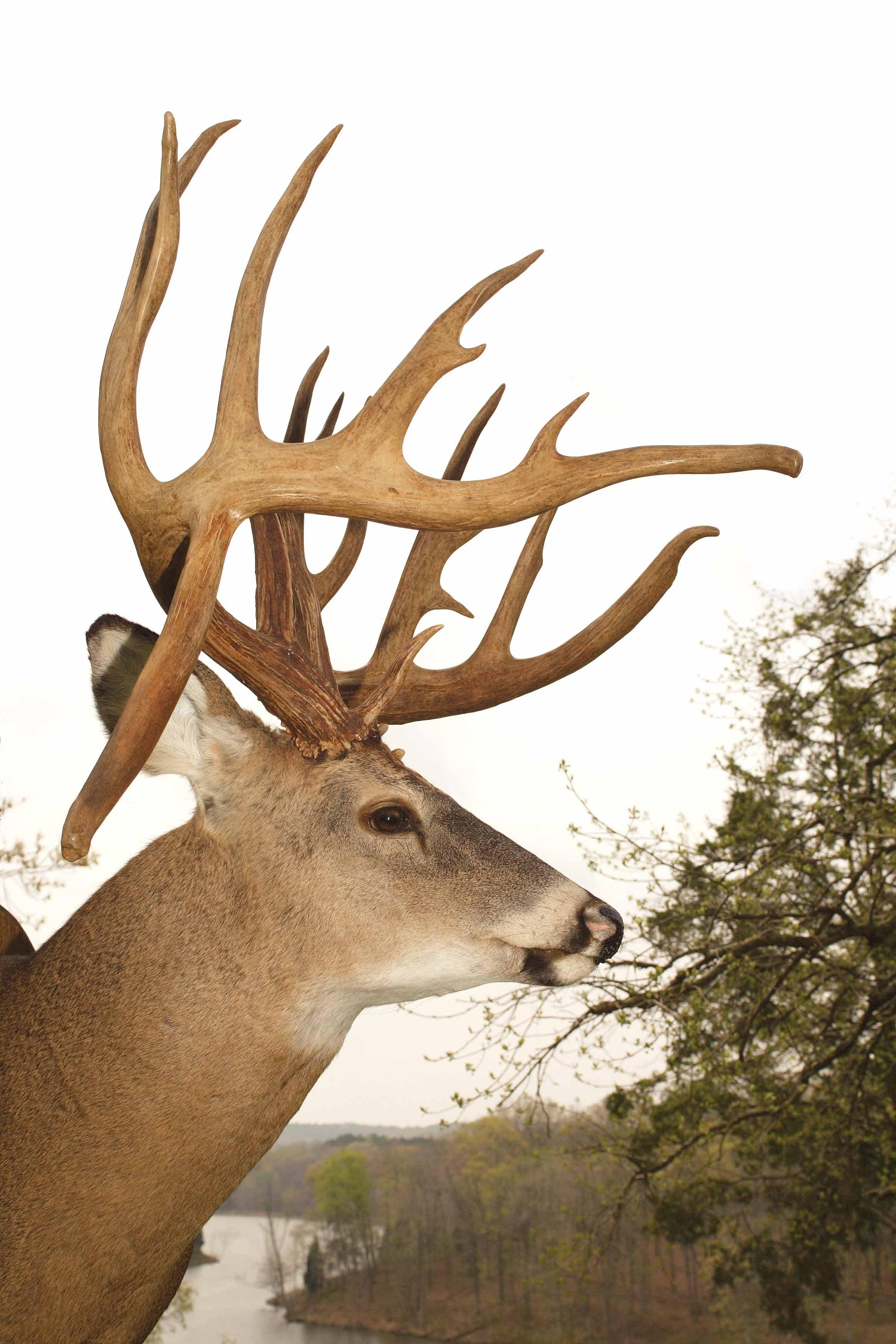The Conclusion of the Story Behind One of the Internet's Most Famous Mystery Bucks
Dan Miller had just pulled the trigger on what he believed to be a nice buck. Sitting over a white oak ridge in western Kentucky, he was hunting a two-day quota hunt in Pennyrile Forest State Park, and the buck, the first whitetail he'd seen all day, had suddenly appeared around 3 p.m. Dan fired his 7mm magnum, and the animal disappeared from view after the shot. Dan assumed he'd dropped it in its tracks, but quickly realized that wasn't the case. Though he initially found a decent blood trail, it soon played out until the hunter could find no blood at all. Now darkness was approaching, and Dan was more than a mile from the road.
The feeling of frustration instantly turned into one of elation, however, as Dan glanced up from the dwindling blood trail and spotted the buck laying dead just in front of him, its massive antlers propped against a small tree. I thought, 'Whoa, what is this? I didn't know he was this good!' he recalled. Shaking with excitement, Miller attempted to count the animal's points, but he kept losing tally around 19 or 20.
It was of course the biggest whitetail Dan had ever seen. He had to quickly shake off the excitement, however, and get someone to help him with the buck. He was more than a mile from the road, and it was getting dark fast — no way could he drag the buck out on his own. He walked back to the road quickly as he could and met some other hunters in his party. Together, they all returned to retrieve the buck.
Trouble was, the big woods all looked alike in the dark, and for 20 minutes, the hunters searched for the buck and couldn't find it. We were walking up the draw four abreast in the dark, Dan said. Finally, I realized we must've walked too far. We back-tracked to where we'd started, and there was the deer less than 50 feet away.
In addition to wild and crazy tales pertaining to how and where the buck had been taken (I saw mentions of a high fence in Texas and of the buck being a new South Carolina state record), rumors of the animal's score ranged widely on the Internet — everywhere from 220 to 290. The buck's official score was 246 3/8, making it the third all-time largest non-typical ever taken in Kentucky. Stories about the animal appeared in numerous magazines and a few TV shows. I received an assignment from Whitetail Journal magazine to write a profile on the buck, provided I could provide a photo. Martin Meredith's taxidermy shop was a few hours' drive from my home, but he had the antlers on a form and agreed to let me take a picture of them.
To this day, the antlers of Dan Miller's buck are the largest and most impressive I've personally ever seen. Meredith agrees. When people see the picture of that deer in my shop, the first thing they notice, of course, is that huge drop tine, Meredith says.
But I like to tell everyone to forget that tine, the forks and all that other stuff. Just look at the mainframe 10-point rack — if you scored that alone, it would measure 205 7/8 typical inches — that would be the fourth-largest typical ever taken. I think that's the truly impressive thing about Dan's deer.
Meredith has had 52 Boone and Crockett whitetails pass through his shop, but the Miller deer will always stand out. I don't expect to ever mount another deer like that, he says. In many ways, the Miller Deer was my 15 minutes of fame, too. I'd love to shoot a deer like that myself, but I doubt I ever will.
Since the buck had been shot in an area where I'd literally grown up hunting, and since I really needed a photo of the finished mount, I gave Dan a call that spring and discussed with him the possibility of meeting in person at Pennyrile. Dan wanted to return to Pennyrile to reminisce a bit anyway, so we agreed on a day and met at the park's lodge a few weeks later. We hung the mount of the buck on a wall with a black back-drop for a photo, which, snapped by my friend and photographer Jason Sealock, appeared on the cover of Southern Sporting Journal magazine the next fall.
Once that order of business was complete, we drove into the forest and stopped at the pull-off leading to the area where Dan had been hunting. I was at least familiar with that section of the forest, although I'd never hunted there myself. We stepped out and began the long walk to the ridge. I agreed that day that I'd never reveal that exact location to anyone, and I still won't.
Several people have asked me what to call that buck, Dan said as we walked along. The Miller Buck, the Pennyrile Buck. Even the Amish buck. I told them not to call it the Amish buck. You know, a deer can't be Amish.
I got a chuckle out of that.
Finally, we reached the area, and Dan said, Yeah, this is the spot. I was sitting right here, and he was standing over there — on that ridge. It was a good looking spot, but honestly, nothing about it stood out to me any more than the thousands of other white oak ridges that cover the western Kentucky landscape. I couldn't help but wonder how many other white oak ridges that buck had crossed in its lifetime, and whether or not it had ever crossed through an area I hunted myself. We walked across a little draw and narrow creek toward the ridge where the buck had been standing. Dan studied the hillside for a moment in silence before looking over his shoulder to where he'd been sitting to figure out precisely where the buck had been standing. He was reliving an extraordinary experience in his mind. The rest of us, all deer hunters, could only imagine the events that had taken place, even standing right there where they occurred.
Gear Review: Bear Kuma Compound Bow in Realtree EDGE
I retold stories of my own hunts in years past, both in Pennyrile and other places. Dan told me that the rest of his deer season, since the buck was taken during the quota hunt and was actually a bonus animal (Kentucky hunters are normally allowed one buck per season), had been slow after that — but it was difficult to complain too much. Before we were finished, perhaps because of the warm day and sprouting greenery, I'd learn that Dan liked deer hunting, but he enjoyed working a spring gobbler even more. In short, by the day's end, I befriended him, if only casually.
The following season, due to the amount of press the buck and the area had received, Pennyrile was crawling with eager bowhunters (the forest is open to bowhunting during the statewide season). I continued hunting the area myself, and couldn't help but chuckle when I'd see guys perched in a climbing stand 50 yards from a gravel road, waiting on the next Dan Miller buck to walk past them. Eventually, the difficulty of hunting the area took its toll on many of the visitors, but the forest still receives a fair amount of pressure — far more than it did when I was a kid.
Dan Miller took a buck the likes of which most hunters will only see in magazines or on TV, and he did it on public land. His name will have a ring of familiarity to many whitetail hunters for years to come. I still see rumors about his buck to pop up on the Internet from time to time, and when they're incorrect, I try to correct them. Dan is a good hunter and good fellow, and his story is a reminder that there are people behind every big-buck rumor that passes through your e-mail inbox or lights up a chat thread on your favorite hunting forum. Have fun admiring pictures of those deer, but be careful about becoming caught up in the gossip. Who knows — a picture of a buck you kill next season could be the next Internet sensation.
Don't Miss: Giant Internet Bucks Part 1
Editor's Note: This was originally published in October of 2009.
Are you a deer hunter wanting to learn how to accomplish your goals? Check out our stories, videos and hard-hitting how-to's on deer hunting.









